撰文:Stacy Muur
编译:Luffy,Foresight News
自 2017 年的狂热时代后,ICO(首次代币发行)终于重返市场,但运行机制与过去 Gas 战争的混乱局面截然不同。这不是一场怀旧之旅,而是一个结构全新的市场,由新基础设施、更精细的分配设计和更清晰的监管框架塑造而成。
2017 年,只要有以太坊合约和白皮书,任何人都能在几分钟内筹集数百万美元。当时没有标准化合规流程,没有结构化分配模型,更没有售后流动性框架。多数投资者盲目入场,许多人眼看着自己持有的代币在上市后不久就暴跌。随着监管机构出手整治,ICO 在随后几年逐渐淡出,被风投轮次、SAFT(未来代币简单协议)、交易所 IEO(首次交易发行)以及后来的回溯性空投取代。
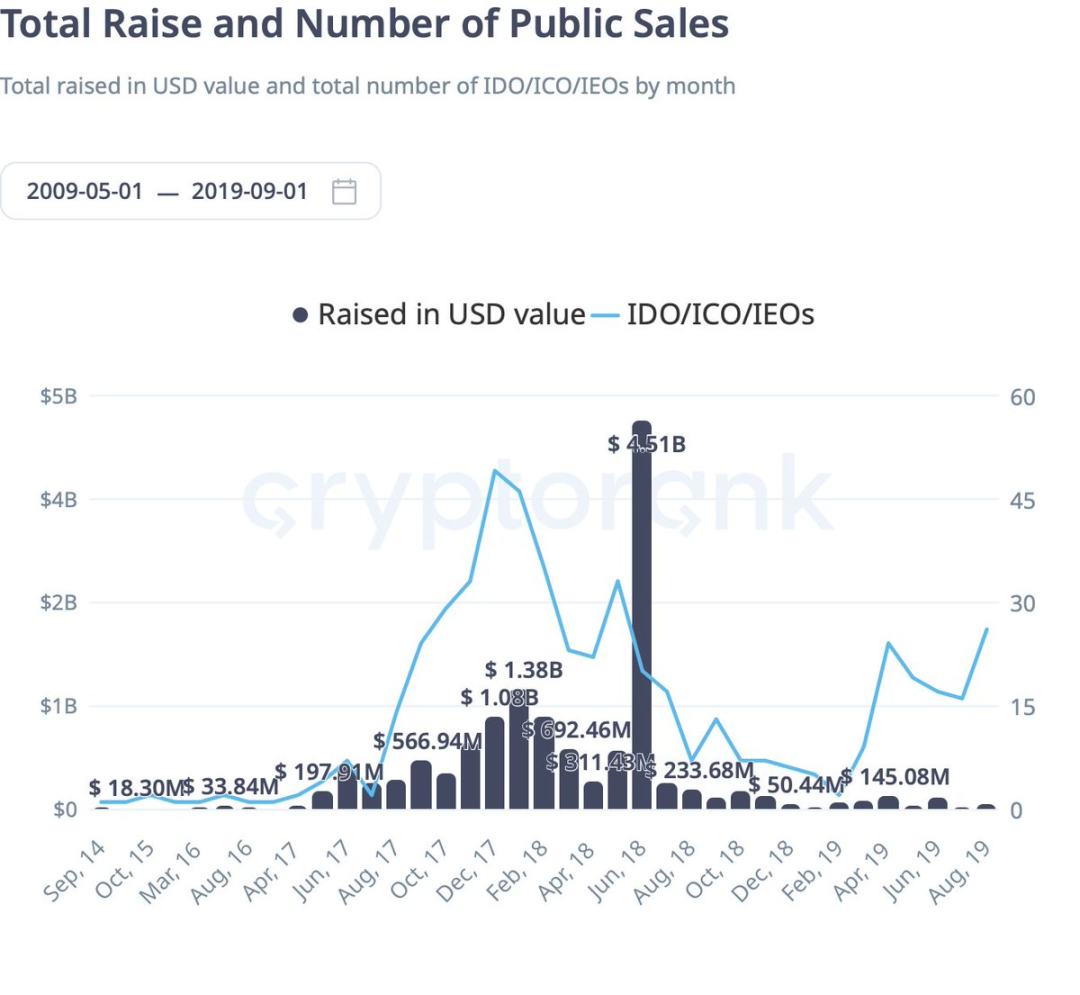
如今到了 2025 年,趋势已经逆转。
但变化并非 项目以更低估值发行,事实上,完全稀释估值(FDV)比以往更高。真正的变化,在于准入机制。
Launchpad 不再依赖纯速度竞争或 Gas 战争。相反,它们通过 KYC(客户身份验证)、信誉评分或社会影响力筛选参与者,再以小额配额而非大户额度的形式,将额度分散给数千名参与者。
例如,在 Buidlpad 平台上,我为 Falcon Finance 承诺投入 5000 美元,最终仅获得 270 美元的配额,剩余资金因超额认购被退还。Sahara AI 的情况类似,我承诺 5000 美元,仅获得 600 美元配额。
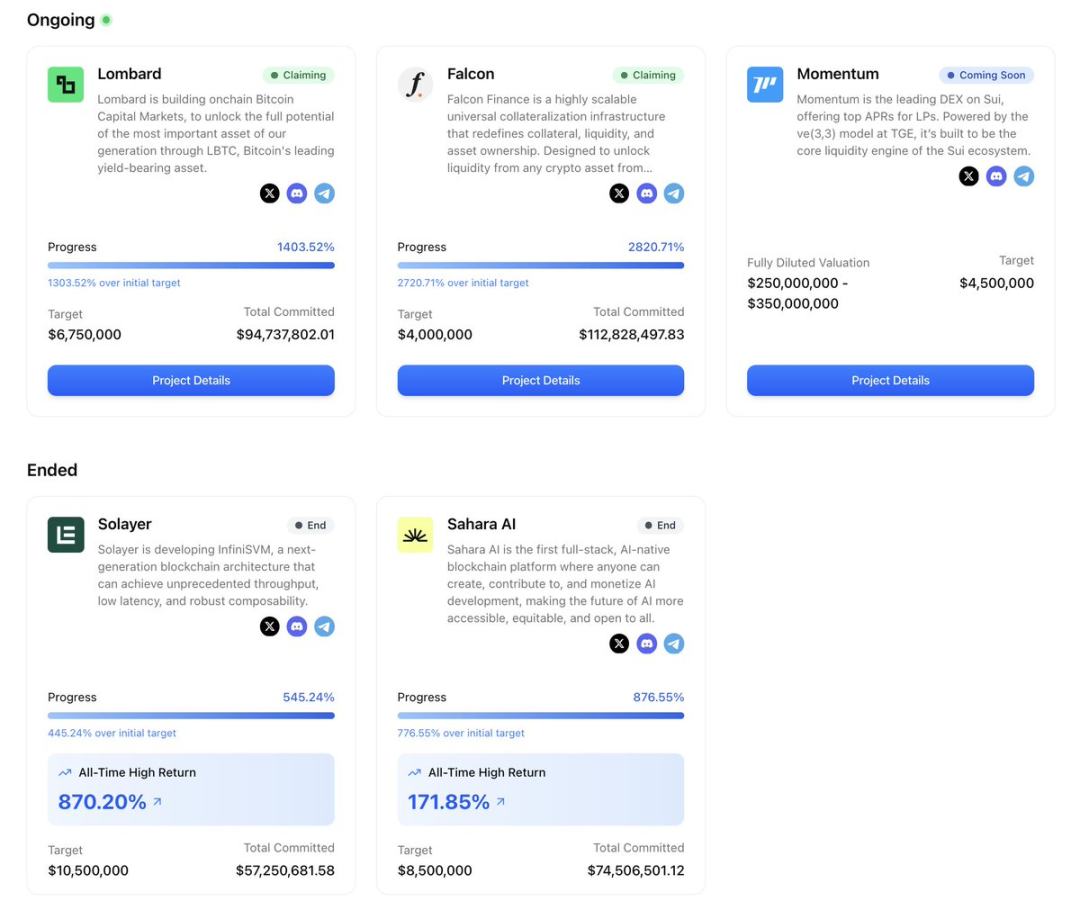
超额认购不会拉低价格,只会缩小个人配额,既维持了高 FDV,又实现了更广泛的代币分发。
监管也已跟上步伐。如今,欧盟 MiCA(加密资产市场法规)等框架为合规散户投资者参与提供了清晰路径,而发行平台也已将 KYC、地理围栏和资格审查简化为简单的配置切换。
在流动性层面,部分平台更进一步,将售后政策直接编码进智能合约,自动为流动性池注入资金,或通过低于某价买入 / 高于某价卖出的区间机制,稳定早期交易价格。
2025 年,ICO 已占据所有代币发售交易量的约五分之一,而两年前这一占比还微乎其微。
此次 ICO 复兴并非由单一平台推动,而是源于新一代发行系统,它们各自解决不同痛点:
-
Echo 的 Sonar 工具,支持自托管、可切换合规模式的跨链发售;
-
Legion 与 Kraken Launch 合作,将基于信誉的配额机制融入交易所流程;
-
MetaDAO 在启动阶段就内置国库管控与流动性区间功能;
-
Buidlpad 聚焦 KYC 准入、社区优先的分发模式,并提供结构化退款机制。
这些平台共同发力,将 ICO 从混乱的融资工具转变为精心设计的市场结构,参与方式、定价和流动性均经过规划,而非临时拼凑。
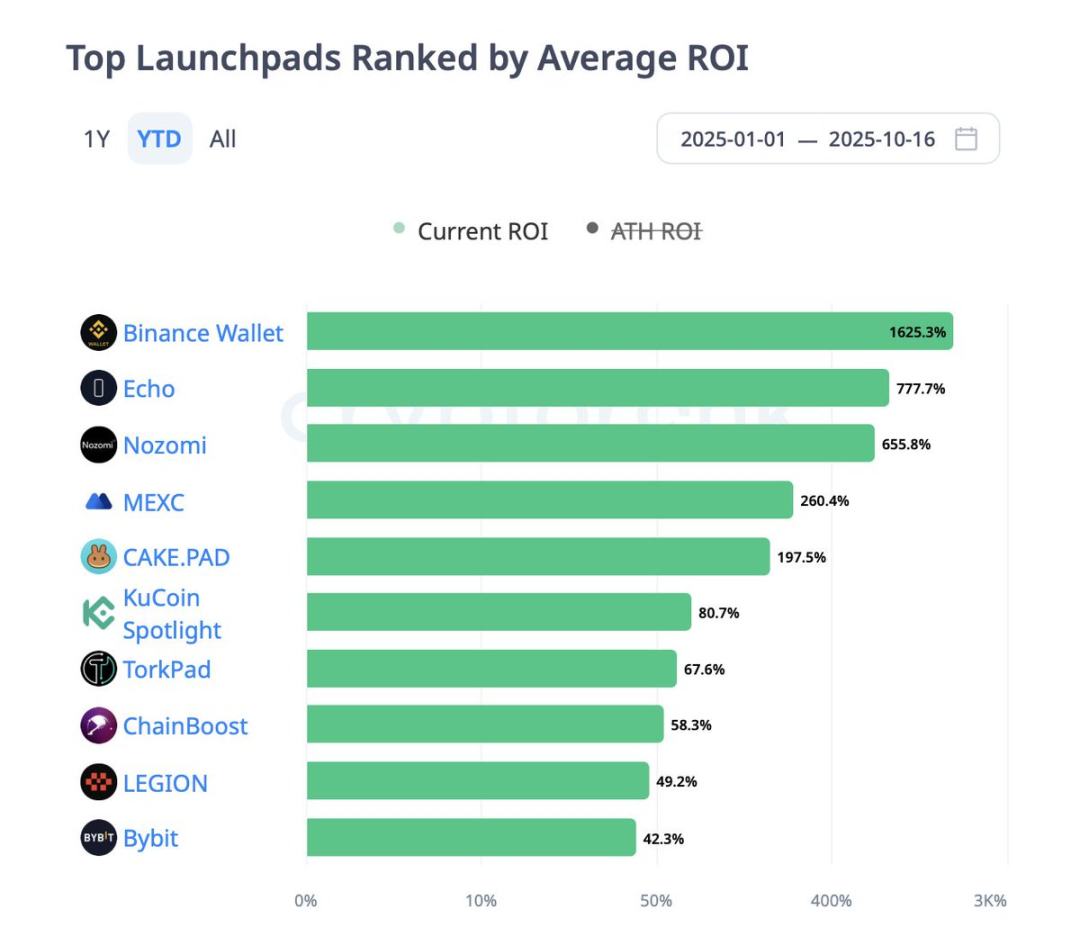
它们各自攻克了第一轮 ICO 热潮中困扰市场的痛点,共同构建了一个更结构化、更透明、也更具投资价值的环境。下面我们逐一解析。
Echo:自托管、可切换合规,热度飙升
由 Cobie 创立的 Echo,凭借自托管公开发售工具 Sonar,成为 2025 年突破性代币启动基础设施之一。与中心化 Launchpad 或交易所 IEO 不同,Echo 提供的是基础设施而非交易市场,项目方可自主选择发售形式(固定价格、拍卖或金库 / 信用模式),通过 Echo Passport 设置 KYC / 合格投资者认证 / 地域限制规则,自行分发发售链接,且支持在 Solana、Base、Hyperliquid、Cardano 等多条链上启动。
该平台增长迅猛:

Echo 最亮眼的案例是 Plasma.今年 7 月,该项目采用时间加权金库模式,以 0.05 美元的价格发售 10% 代币,吸引了超 5000 万美元的承诺资金。Plasma 的历史最高回报率(ROI)达 33.78 倍,成为年度表现最佳的 ICO 项目之一。紧随其后的 LAB,上市时回报率也达 6.22 倍。
以下是 Echo 近期发售项目的概况:
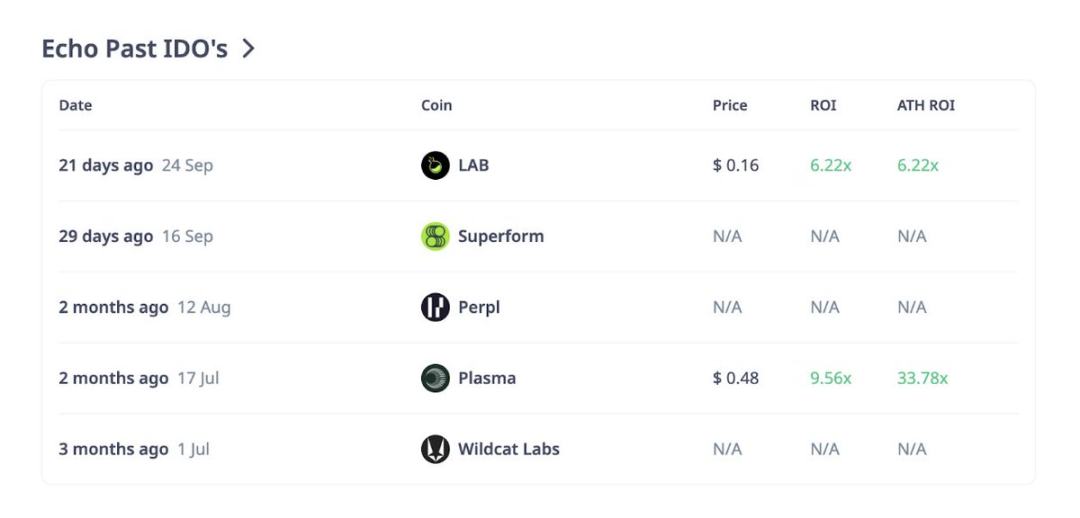
这些数据既体现了收益潜力,也反映了收益的差异性。尽管 Plasma 和 LAB 带来了高倍数回报,但 Superform、Perpl 等其他项目尚未上市或公布业绩。需要注意的是,Echo 不强制推行售后流动性框架,流动性池注入、做市商要求和解锁时间表均由发行方决定,而非平台统一规定。
投资者须知:Echo 的灵活性使其成为本轮周期中回报率最高的启动基础设施,但也要求投资者做好尽职调查。务必确认以下三点:
-
合规开关设置(KYC / 合格投资者规则);
-
发售形式(金库、拍卖或固定价格);
-
发行方的流动性计划(Echo 不对此做标准化要求)。
Legion 与 Kraken Launch:信誉与监管结合
如果说 Echo 代表发行方主导的灵活性,Legion 则完全相反;它是结构化、信誉准入的公开发售渠道。
今年 9 月,Kraken Launch 正式上线,其底层技术完全由 Legion 提供支持。这是首次实现代币发售直接在 Kraken 账户内进行,遵循 MiCA 合规要求,通过信誉评分决定参与者的优先级。
该平台增长迅速:

Legion 的核心是 Legion 评分机制—— 一个 0-1000 分的信誉指标,由链上活动、技术贡献(如 GitHub 提交)、社交互动和他人背书综合计算得出。
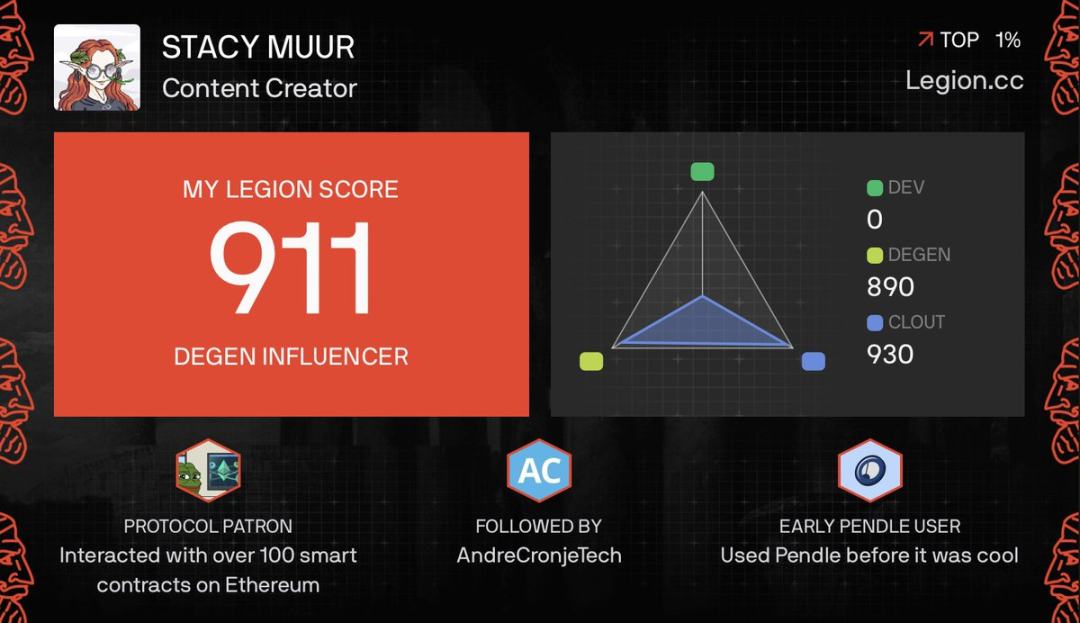
项目方可预留一定比例的代币配额(通常为 20%-40%)给高分用户,剩余配额再开放给先到先得 或抽签阶段。这彻底颠覆了传统 ICO 的配额模式:不再奖励速度最快的机器人,而是奖励开发者、贡献者和有影响力的社区成员。
以下是 Legion 近期发售项目的概况:
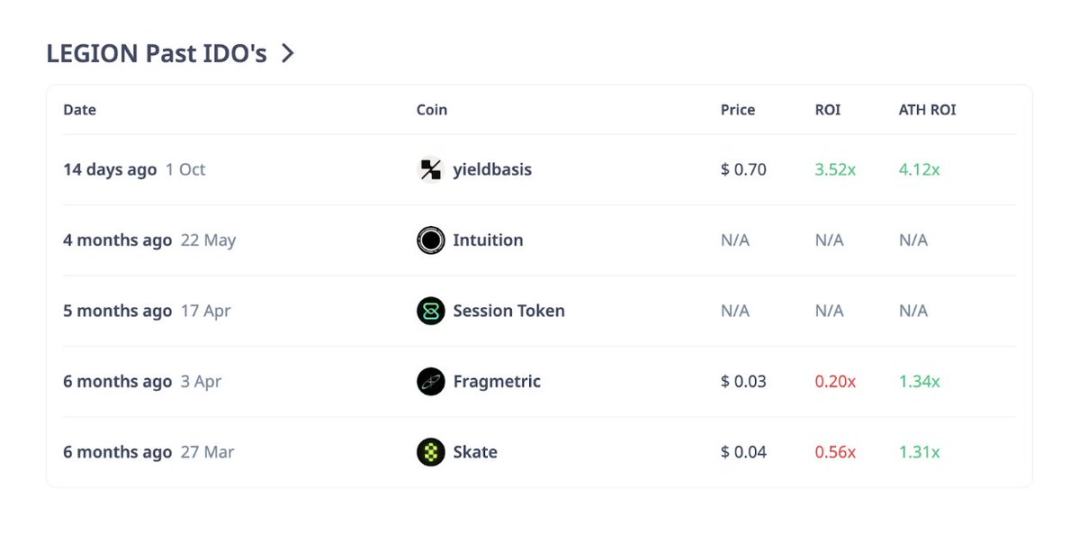
Kraken 的整合还增加了一层保障:交易所级别的 KYC / 反洗钱(AML)审核,以及首日流动性。这相当于 IPO 式启动与社区配额机制的结合。早期案例如 YieldBasis 和 Bitcoin Hyper,在优享阶段(面向高分用户)均出现大幅超额认购,低分用户则被引导至额度受限的公开发售轮次。
当然,它并非完美。部分早期用户指出,Legion 评分可能过度看重社交影响力—— 大型 X 平台账号持有者的排名,可能超过真正的开发者,评分权重体系的透明度也有待提升。但相较于过去抽签乱象,这已是显著进步。
投资者须知:Legion 评分至关重要。如果想在优质项目发售中获得配额,需尽早构建链上记录与贡献档案。此外,务必确认每个项目优享轮与公开发售轮的配额分配比例,不同项目会调整这一规则。
MetaDAO:机制优先,营销其次
MetaDAO 正在做一件其他启动基础设施从未尝试过的事:将售后市场政策直接编码进协议本身。
它的运作机制如下:如果 MetaDAO 上的发售成功,筹集的所有 USDC 将存入由市场管理的国库,代币铸造权限转移至该国库;国库会将 20% 的 USDC,连同 500 万枚代币,注入 Solana DEX 的流动性池;同时,国库被设定为「低于 ICO 价格时买入、高于 ICO 价格时卖出」,从发售首日起就在锚定价格周围形成一个软性价格区间。
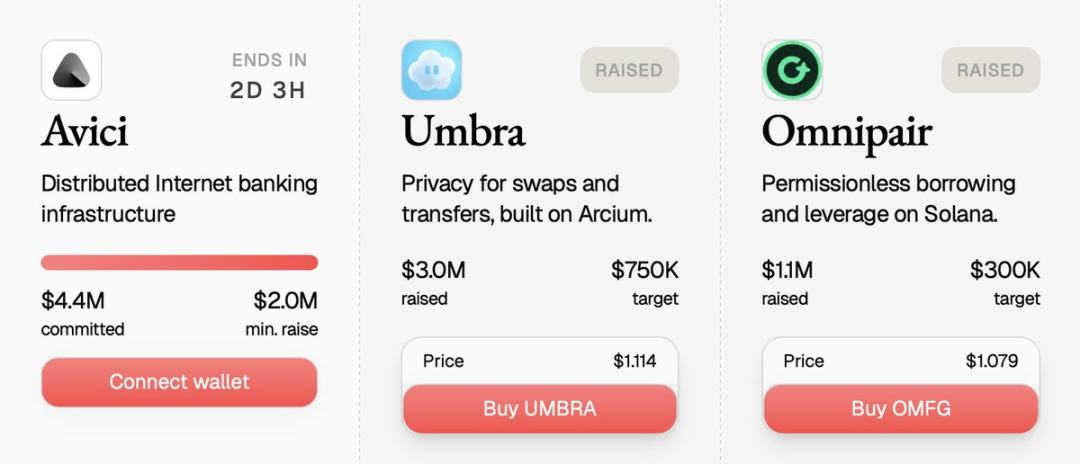
看似简单的机制,却彻底改变了早期交易动态。在传统 ICO 中,若流动性不足或内部人士抛售,二级市场价可能暴跌;而有了 MetaDAO 的价格区间机制,早期价格往往在限定范围内波动—— 下跌幅度更小,暴涨也会被限制。这是一种机制保障而非口头承诺。如果市场完全无需求,国库资金最终会耗尽,但它能在关键的首日引导市场行为。
最具代表性的案例是 Solana 隐私协议 Umbra。Umbra 的发售吸引了超 1 万名参与者,承诺资金据称突破 1.5 亿美元,发售页面还实时展示大额配额数据。亲眼目睹这种透明分发,仿佛能窥见更结构化的 ICO 未来—— 透明、链上化、政策可控。
投资者须知:参与 MetaDAO 发售时,务必记下 ICO 价格并理解价格区间规则。若在略高于区间上限的价格买入,需注意国库可能在上涨过程中成为你的交易对手方(卖出代币);若在略低于区间下限的价格买入,则可能被国库接盘。MetaDAO 奖励理解机制的投资者,而非追逐热度的投机者。
Buidlpad:拥抱合规散户投资者
Buidlpad 专注于一件简单却强大的功能:为合规散户投资者提供清晰的社区轮参与路径。该平台成立于 2024 年,核心流程分为两阶段:首先,用户完成 KYC 注册与预约;然后,在出资窗口期内提交资金承诺。如果发售超额认购,多余资金将被退还。部分发售还通过分级 FDV 管理需求,早期阶段 FDV 更低,后期阶段 FDV 更高。

Buidlpad 的里程碑时刻出现在今年 9 月,即 Falcon Finance 的发售。该项目目标融资 400 万美元,最终获得 1.128 亿美元承诺资金,超额认购达惊人的 28 倍。KYC 阶段为 9 月 16-19 日,出资阶段为 22-23 日,退款于 26 日前完成,整个流程顺畅、透明,且完全由散户投资者推动。
简单是 Buidlpad 的优势。它不搞复杂的评分体系,也不设预测性国库,只专注于为通过合规审核的社区提供结构化参与渠道。但需注意,流动性仍完全依赖发行方的规划,且跨链分散发售有时会导致售后交易量分散。
投资者须知:标记关键日期。KYC / 预约窗口期是硬性门槛,错过就会失去配额资格。同时,仔细阅读层级结构—— 早期阶段往往能以更低的 FDV 入场。
跨平台共性与风险
整体来看,这些平台呈现出几个共性特征:
-
超额认购普遍,但热度未必持久。Falcon 的 28 倍超额认购、Plasma 的数亿美元关注度、Umbra 的庞大需求,这些头条数据看似耀眼。但若无持续使用场景,高 FDV 往往意味着售后光环褪去后,早期价格会回落。
-
机制决定波动率。MetaDAO 的买卖区间确实能减少混乱,但也会在卖出区间附近限制收益上限;Echo 和 Buidlpad 完全依赖发行方自律;Legion 则依靠交易所上市提供流动性深度。
-
信誉体系改变配额逻辑。有了 Legion,早期构建评分可能意味着获得可观配额与在受限公开发售池中争抢的天壤之别。
-
合规筛选是优势而非缺陷。KYC 窗口期、合格投资者开关、优享评分筛选,这些机制虽降低了混乱度,但也加剧了参与分层。
而在这些表象之下,风险依然存在:评分体系可能被操纵,国库可能管理失当,大户仍可通过多钱包主导配额,监管执行也可能落后于营销宣传。这些机制并非万能药,只是改变了市场博弈的场景。
2025 年投资者指南
如果想明智地应对新一轮 ICO 热潮,需从结构层面思考:
-
先理清机制,再克制 FOMO。是固定价格还是拍卖?有优享阶段还是纯先到先得?有国库价格区间还是完全自由放任?
-
标记资格窗口期。KYC / 预约截止日期、合格投资者要求、地域限制 —— 错过一个日期,可能就错失全部配额。
-
理解流动性计划。是 MetaDAO 的编码流动性区间?Kraken 的交易所上市?还是 Sonar 上发行方自主规划?流动性决定早期价格走势。
-
针对性布局。参与 MetaDAO 需了解价格区间,参与 Legion 需早期积累评分,参与 Buidlpad 需瞄准早期阶段。
-
合理控制仓位。超额认购的热门项目不代表二级市场表现强劲。将这些投资视为结构化赌注,而非稳赚不赔的登月机会。
作者思考
2025 年 ICO 的回归,无关怀旧,而是关于新基础设施、新规则与更自律的市场。Echo、Legion、MetaDAO、Buidlpad 等平台,各自解决了 2017 年 ICO 模式中的部分缺陷:有的聚焦合规,有的优化配额,有的完善流动性政策。它们共同发力,让公开代币发售不再是投机性狂奔,而更接近结构化的资本形成过程。
对投资者而言,这意味着优势不再仅仅是早入场,而是理解机制。因为在 2025 年,ICO 并未走向消亡,而是正在走向成熟。
免责声明:本文章仅代表作者个人观点,不代表本平台的立场和观点。本文章仅供信息分享,不构成对任何人的任何投资建议。用户与作者之间的任何争议,与本平台无关。如网页中刊载的文章或图片涉及侵权,请提供相关的权利证明和身份证明发送邮件到support@aicoin.com,本平台相关工作人员将会进行核查。




